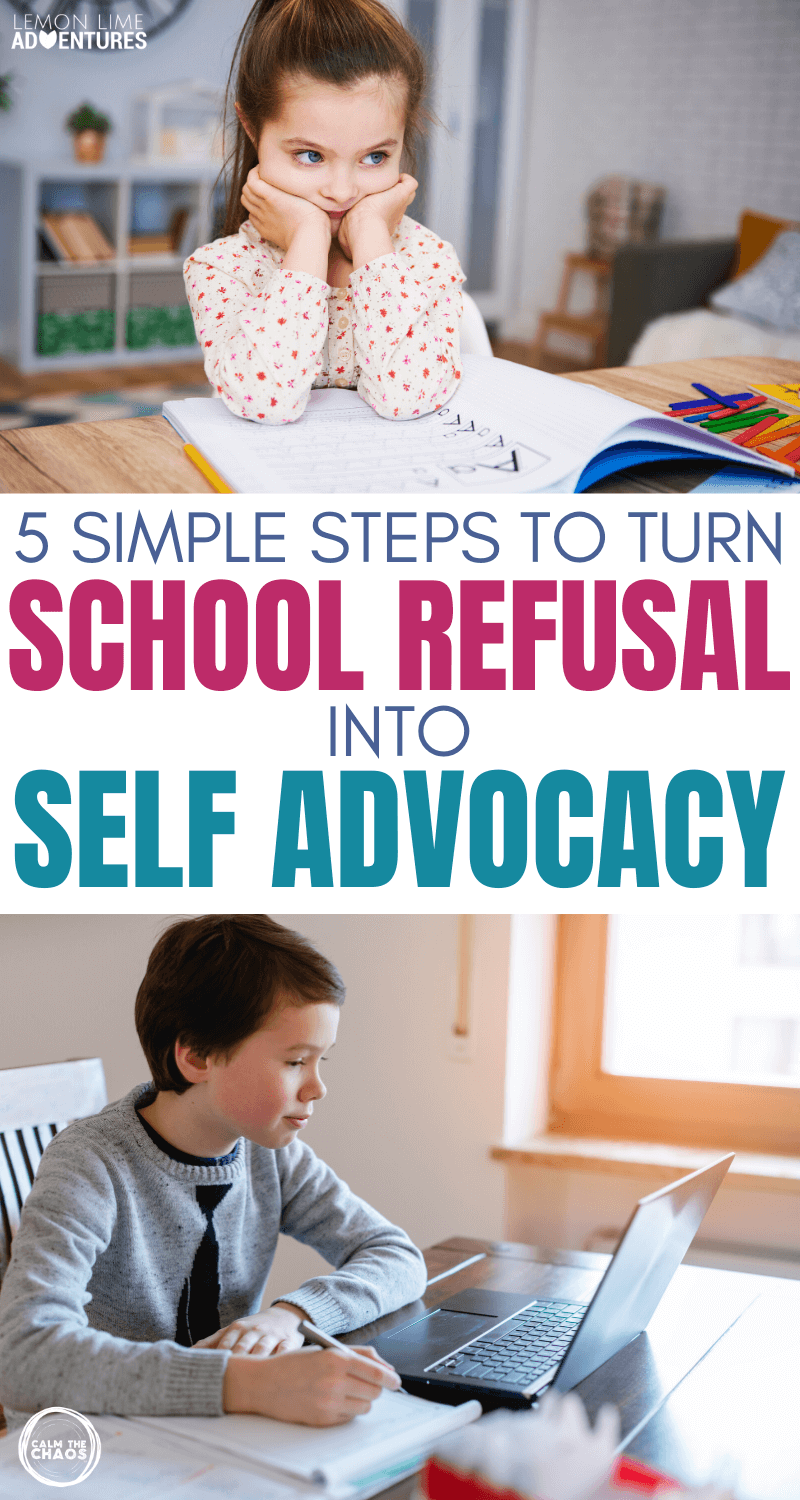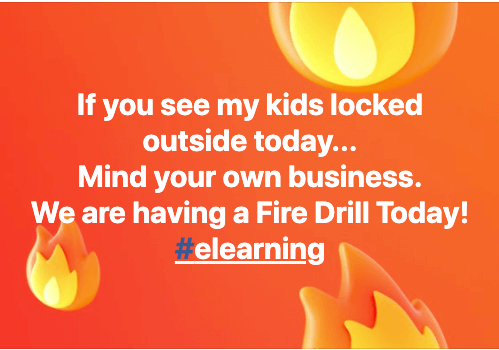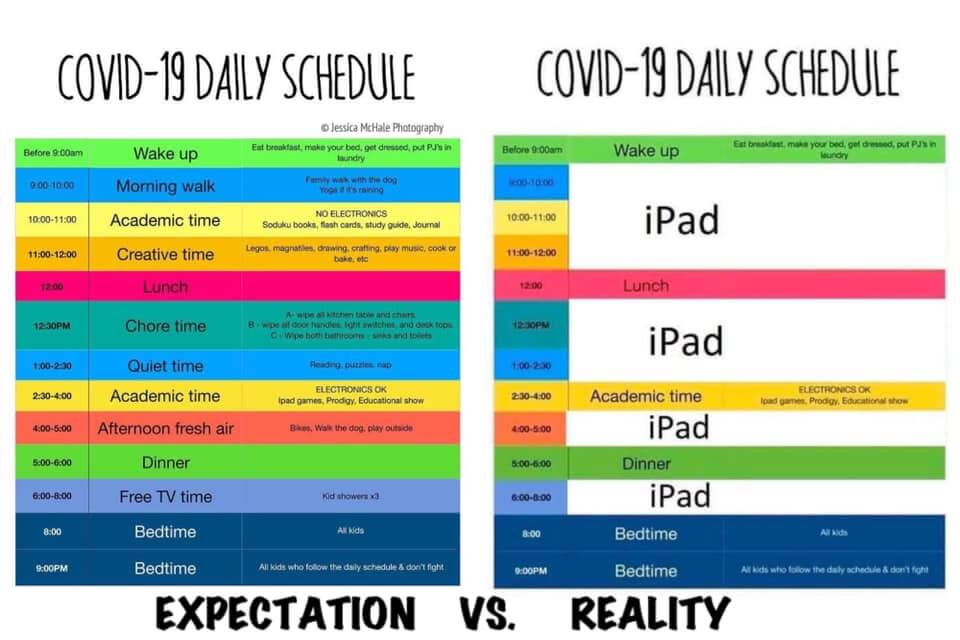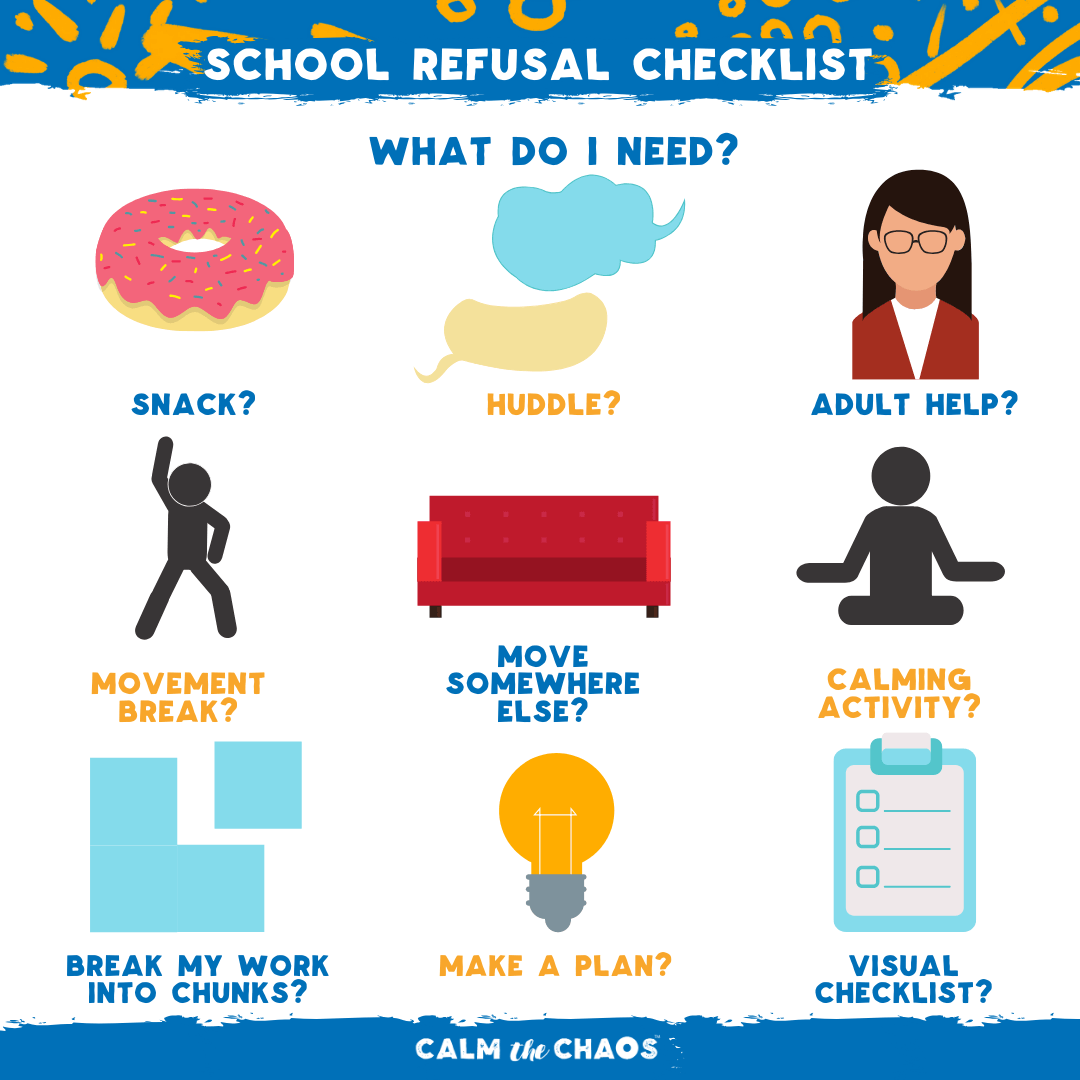Inside: Kids refusing school work? Try these 5 steps to get even the most defiant kid on board with e-learning, homeschool or homework. (hint: it’s all about Empowerment)
Are your kids refusing school work?
Does it seem like no matter what you try, they battle with you.
CONSTANTLY..
Maybe you only have a week left of school, or maybe you are on the other side of the world and school’s just starting back up again…
Whatever it is, your child is flat out refusing to do school work at home.
If so, you are definitely in the right place!
That’s exactly what I’m going to talk about today. Today I’m going to share how to empower your kids so you CAN get through the schoolwork without massive fights and refusal.

Here’s the thing, I know that with everything going on, getting your kids to do schoolwork at home is a huge battle right now.
I have friends on the other side of the world starting up school and their kids are saying, “No, I do not want to do this!”
I also have friends who are homeschooling and they say, even though I’m used to homeschooling, with everything else going on, getting my kids to do schoolwork right now is absolutely a nightmare.
It is a battleground ALL DAY long.
If you don’t stay right by your child every second of the day, then you can’t get anything done.
You’re spending hours working with your child on a creative writing project that should take about five minutes!
Your kids are saying…
“I don’t want to..”
“Do I have to?”
“You CAN’T MAKE ME!!”
“It’s too hard!”
Perhaps, your child absolutely refuses to do school at home because home is home and school is school.
Even after weeks of being at home, they still are adamant that school is for school and home is for home.
Or perhaps… you can’t get your kid to stay on task for more than five minutes.
They’re constantly moving from thing to thing to thing. Especially with all the distractions that are happening at home.
Or maybe you’re trying to do schoolwork at home, but you spend most of your day managing zoom accounts and log-ins and trying to get your kids to just get something, ANYTHING accomplished!
You know they CAN do it, but they just WON’T do it.

I want you to know:
If things are not going as planned,
If things are not going as well as you had hoped…
This DOES NOT mean something bad about your kids or something bad about you.
Instead…
I want you to take a big old deep breath and say:
“It is OKAY that school is not going perfect”
E-Learning Is Not for The Faint of Heart…
How many of you guys are feeling like this?
You decided to have a “fire drill” and locked your kids outside!
Because you are just SO DONE!

Or maybe you feel more like Sue.
She’s 31 years old. She’s been schooling at home with her kids (while trying to work from home and deal with her growing to do lists).
How many of you guys look like dear old Sue here?

Right now we are dealing with unprecedented times.
We’re stuck at home on top of everything else…
- We’re having to listen to the latest news and updates about what is happening in our world.
- Having to figure out home school and manage zoom accounts and virtual school assignments.
- Having to figure out work closures and figure out how to pay the bills
- Having to work from home while making sure your kids don’t kill each other
- Having to navigate the grocery store…
Some of you, or your spouses are now having to go back into work and you have the extra worry of all that.
If e-learning is not going as planned, it’s ok.
Maybe you don’t even want to talk about school, because your kids are almost done – and you cannot wait!!!
You might be thinking,
“Why do I need to worry about school refusal right now?
I’m starting to think about summer and how I’m going to deal with them being stuck at home with no camps or activities.“
But I know many of you guys who have kids that are out of the box are going to be dealing with extended school year.
So you’re going to have e-learning over the summer.
If you’re on the other side of the world, many kids are going back to school sooner rather than later.
But here’s what I do know.
We will go back to school eventually, no matter where we are.
And for most of us, when we go back to school, life is not going to be the same.
Our schools are in for a huge, huge change because our kids have gotten used to being home:
- snacks whenever they want,
- as many breaks as they want,
- one on one attention when they struggle, and…
- class sizes of 1-5 kids.
School is going to have to change.
In fact, I predict…
We’re going to be dealing with school refusal for a long time.

So you need to start working on how you can approach this from a different perspective right now.
Why Even “Good Students” Refuse Schoolwork
The truth is, it’s not just kids that don’t like school or kids that typically are easily distracted and rigid that are having a hard time with school right now.
In fact, right now my daughter, who’s about to turn seven on Saturday, is really struggling with school refusal.
And she’s like your picture perfect student.
- She pays attention.
- She raises her hand.
- She participates.
- She loves learning.
I don’t think I’ve ever gotten a call from school that there is a struggle with her.
(Now my other kids… well, that’s a different story, but my daughter doesn’t really struggle with school usually.)

But once we came home…
- She didn’t want to do any reading.
- She didn’t want to do any Zoom calls.
- She didn’t want to do anything that we had to do.
- She didn’t want to problem solve.
In fact, all she did was throw fits any time I asked her to do any schoolwork at all.
At first, I was so frustrated. I couldn’t figure out what was going on.
However, once I slowed down and started to do the things that I’m going to teach you today, things started to turn around.
All behavior is communication.
Once I remembered, to look at her behavior as communication and as a sign of overwhelm and an unmet need, things started to turn around drastically.
NOW…
- She’s showing up on zoom calls.
- She’s meeting her friends.
- She’s talking to her teacher.
- She’s doing her assignments.
She’s actually done with her assignments in about an hour now, where it used to take ALL DAY!
Yes, it would drag out all day… there were goat whines and screaming.
If it is possible for me… it’s possible for you!
I want to show you how you can have this success too!
5 Steps to Turn School Refusal into School Advocacy
A couple of things I’ve noticed that I see so many parents trying right now…
E-learning Trap #1: Pretty Pinterest Covid Schedules
I see people trying those pretty Pinterest schedules.
You know the ones that were all over Facebook when lockdown first started and we had to start schooling at home.
How many of you guys tried those?
How well did that work for you?
How many days did that nice pretty adorable schedule work, right?
One? Not at all?
E-learning Trap #2: Ultimatum Wars
Also, I see a lot of people setting very firm boundaries and harsh rules.
You have to do your schoolwork or you’re not going to get and iPad time.
You’re going to have to do this or you don’t get this.
And then it just makes your kids feel like you’re in a constant battle.
You’re just battling back and forth and, and holding ultimatums over their head.
E-learning Trap #3: Bribery & Trickery
And then I see people who are like, you know what, forget the ultimatums… I just need them to do something so I can work.
So they decide to bribe them… pull out all their tricks. But then you’re going broke with all the bribery that’s going on, and you find yourself running out of things….
…What happens when they go back to school and they don’t want to work because they’re no longer being bribed?

What happens when they go back to school and they no longer have an iPad or Fortnite or Animal Crossing over their head?
And you can no longer give them an ultimatum that you have to do schoolwork or you don’t get YouTube or XYZ.
If your kids don’t have that innate ability to self advocate, or the self-awareness to self-regulate when they go back to school, you’re going to deal with this forever.
Honestly, you’re going to deal with this refusal both in school and out of school if we don’t actually slow down and take the time to teach our kids to self advocate in a way that others will listen.
Step One: Swap and Change Your Perspective
Do you wish for your kids to be confident, empowered, strong?
Do you would wish your kids were able to self advocate and stand up for what they believe in?
However, when your kids talk back, when our kids are disrespectful, when our kids refuse what we ask them to do, you see it as disrespect and not them advocating for their needs.
You might say,
“Oh my gosh, this is terrible!”
“My kid is such a brat”
“My kid is so lazy”
“My kid is so rude”
We come up with all these words and feelings about the way we see them refusing or yelling or standing up for themselves.
Are they advocating in a way that makes us want to help them?
No, absolutely not.
They are trying to advocate, but they don’t know how:
- to speak up for what they want and need.
- to explain why they are struggling.
- to tell me what they’re struggling with.
But that’s why we’re their guide.
We need to help them to shift into advocating in a way that we want to listen? In a way that makes us want to help them?
So step one is to see refusal as an unmet need.
Then we can see refusal as advocacy, empowerment as confidence, and strong as standing up for what they believe in.
This is a powerful mindset shift.
And if you make the shift, it doesn’t matter what they’re refusing.
It doesn’t matter if they’re refusing bath time.
It doesn’t matter if they’re refusing schoolwork,
it doesn’t matter if they are refusing to eat their green peas.

If you can see refusal as advocacy – That is really powerful!
Can you start seeing refusal as:
- empowerment,
- confidence,
- being strong and
- standing up for what they believe in?
If you can see that, it is going to make a powerful impact on your relationship with your kids.
Step Two: Ask Why
In order to empower our kids to self-advocate instead of flat-out refusing schoolwork, it is important to help our kids become self aware.
To do that we have to problem solve.
We have to look at what is happening and we have to ask questions.
We have to become a detective.
We need to do this alongside our kids, because our kids often don’t have the ability to actually know why things are bothering them.
For this one you want to ask yourself:
Why are they refusing?
Why are they having a hard time?
Why are they whining?
Why are they not wanting to do this?
When you ask why, it’s really hard to get triggered.
When you stay in the question, it’s almost impossible for you to also be triggered.
This is so powerful in your ability to remain calm and show up for your child to help instead of getting upset yourself.
Not only are you switching from refusal to empowerment, you are helping them dig under the surface and helping them become self aware.
Questions that Foster Self-Awareness and Problem Solving:
- Do I need food?
- Do I need water?
- Do I need a break?
- Is it overwhelming?
- Do I need help?
- Do I need to chunk it down?
- Do I need a sensory movement?
- Do I need to eat something?
- Do I need connection time?
- Do I feel bad about myself?
You can help your kids become self aware of the things they like, things they don’t like, the things that frustrate them, and the things they need to be able to be successful.
Instead of screaming “NO!”,
try…
“This is really hard for me because…”
And you can do this at any age!
With my daughter who is “seven” years old, this is exactly what I started doing.
I started realizing that she was stuck when it came to Zoom calls or any live component.
So I started honing in on that and becoming a detective.
Step Three: Plan
This is super important!
Write this down.
Always involve your children in a plan.
The reason those Pinterest plans didn’t work is because someone created a cute plan and millions of people downloaded it and tried it, but it wasn’t unique to their specific child and their child had no say in the plan.
They went from doing things one way at school to suddenly doing things totally different at home.
So they put their heels down and they didn’t want to do it!
It is important to create a plan ahead of time.
- What can we do and when?
- What sensory breaks can we put into our day?
- What routines can we set up ahead of time?
- What schedules can we put in place?
- What can we do when we get stuck?
- What can we do when there’s a mistake?
- What can we do when we don’t know an answer?

With my daughter I said, “So I’m noticing that when there’s a live video, you’re really having a hard time.”
She was able to say, “It’s not like school. I don’t want to do it because this is home and I don’t like the way we’re doing it! It reminds me of how much I miss my friends.”
So once I had that information, we could make plans for the pieces that made her miss her friends.
And that made a huge difference!
Step Four: Validate Feelings and Become a Bridge
As hard as it is, when our kids are refusing and throwing things at us or yelling at us, it is important to meet them where they are and validate their feelings.
We don’t want to just tell them, we want to become their guide.
So instead of saying:
“It’s not that hard!”
“It’s not that big of a deal!”
“It’s okay, you’ll be fine.”
“Get over it!”
Instead, we want to validate their feelings and become their bridge.
It is okay to feel frustrated.
It is okay to be upset.
It is okay to be sad.
It is okay to miss your friends.
It is okay to be overwhelmed.
It is okay to not know the answer.
And let them feel that way.
We have to validate and allow those emotions and those feelings and we become their bridge.
We take them from where they are at, to where we want them to be.
But we have to first meet them where they are at and become their bridge by asking them questions.
With my daughter it sounded a lot like this:
“I hear that you’re really frustrated,
I see you’re really sad,
I wonder if there’s another way that you can feel like you’re connected to your friends?
I wonder if there’s something else we can do instead?
I wonder if we can ask your teacher if there’s another activity you can do instead of Zoom calls.”
This allows you to become the guide and help your child shift their thinking from absolutes to possibility.
In fact, you’re helping them craft a plan that they are part of.
Step Five: Chunk it and break it down.
Finally, you want to help your child chunk down their project, assignment or schoolwork into small manageable pieces.
The reason for this is you are helping your kids on their unique journey.
It’s progress, not perfection.
You’re not going to get your kids going from refusing to do school every single day to doing their schoolwork in one hour, right?
Instead, you’re going to take one project at a time, one assignment at a time, and you are going to help craft small moments of success.
I want you to think about what it’s like in your own life, when you have a big project, say cleaning out the garage.
If I told you to clean the garage in one hour, would you feel successful?
If I came to you at the end of the day and asked “How did you do?” You would feel so defeated.
But if instead I said, “Hey, there is a shelf in the garage that has all the Christmas stuff, can you just go through that and decide what you’re going to keep and what you’re going to get rid of.”
Then, when you look at your Christmas stuff at the end of the day, you can see space on that shelf.
You feel accomplished – even if the whole rest of the garage is still a mess.
You would feel much more validated, much more successful.
Then you can build on that success.

It’s the same thing we want to do for our kids.
We want to craft that journey, have them experience those small wins.
Help take a big project and break it down, create those small opportunities for success, and then build on that each day.
More Help to Get Kids to Do What You Ask:
To help you get started, we’ve created some really cool posters about how to get your kids to listen, follow directions and learn from home.
These posters will help you get your kids to Do What You Ask. We share ways to get them to listen, do school work and follow simple directions without complaining, refusing or fighting with you!
There’s also some amazing tips for getting school work done!
So I know your thinking, this is awesome. I can see my kids refusal as empowerment and I can start to involve them in plans.
But what the heck do I do when they won’t follow a plan?
Or how the heck do I even make a plan in the first place?
And I hear you saying to involve them, but you’re not sure how to involve them…
- What if they continue to say no?
- What if they continue to refuse?
- What if they just say, “I don’t know.”
We’re going to discuss that in our next blog post about how to get our kids to listen without throwing fits.
But for now, you can get started by and downloading the FREE Get Your Kids to Do What You Ask posters and practicing some of the phrases.
Want more In the Moment Plans for Chaos Causing Behaviors or Struggles?
We got you covered.
In our Meltdown Mastery Workshop, we will walk you through how to create your own individualized personalized in the moment plans to deal with the most common (and uncommon) tantrums, meltdowns, and outburst.
This is what we do all day, every day in our huddle membership, is help people create in the moment plans for their biggest Chaos Causers so they can become problem solving partners with their kids.
In this free workshop, you’ll discover:
✔️ How to stay calm even as your child cries, hits, and screams at the top of their lungs using the Stop, Breathe, Anchor technique
✔️ How to uncover what’s really behind the meltdown, tantrum, or outburst using the Behavior Funnel (you’ll know what’s causing it and how to end it quickly)
✔️ What to say and do to help your child to quickly calm down using the 1:1:1 plan (help your child calm down fast without bribes, consequences, or yelling)
Click here to join the waitlist!










I’m so grateful if this information you freely share, thank you!!
I followed the get the free download able posters link and am unable to receive them for some reason (I’ve quadruple checked my e-mail is right), I even ordered the kit, is there someway I can get in contact with whoever is trying to sell that package? Or is it a scam?
Hi Chantelle- Please email help@calmthechaosframework.com if you haven’t found an answer yet!! Thanks!